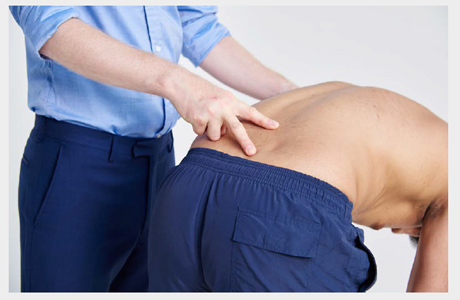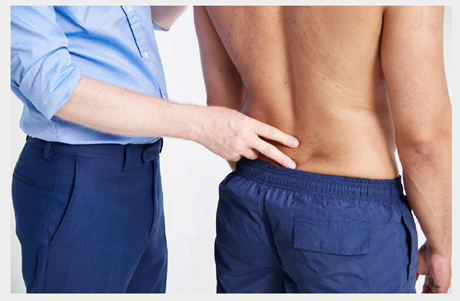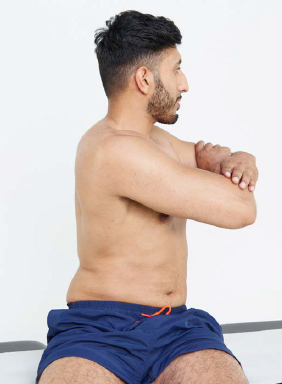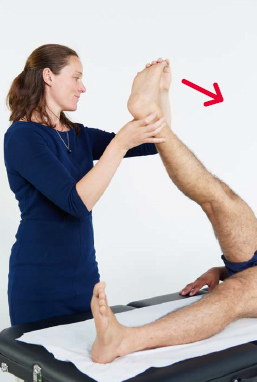Examination of the spine video
Watch now
A short video demonstrating how to examine the joints of the spine.
Look
- Observe the patient standing. Look initially from behind the patient for any obvious muscle wasting, asymmetry, or scoliosis of the spine.
- Look from the side for normal cervical lordosis, thoracic kyphosis, and lumbar lordosis.
Feel
- Feel down the spinal processes from the top of the neck to the sacrum and over the sacroiliac joints for alignment and tenderness.
- Palpate the paraspinal muscles for tenderness.
Move
- Assess lumbar flexion and extension by placing two or three fingers over the lumbar spine. Ask the patient to bend to touch their toes. Your fingers should move apart during flexion and back together during extension (see images below).


- Ask the patient to run each hand in turn down the outside of the adjacent leg to assess lateral flexion of the spine.
- Next, assess the cervical spine movements. Ask the patient to: tilt their head to each side, bringing the ear towards the adjacent shoulder (lateral flexion); turn their head to look over each shoulder (rotation); bring their chin towards their chest (flexion); and tilt their head backwards (extension). As highlighted in the GALS screen, lateral flexion is usually the first movement to be restricted.
- With the patient sitting on the edge of the couch to fix their pelvis and their arms crossed in front of them, assess thoracic rotation (with your hands on the patient’s shoulders to guide the movement) (see image below).

- With the patient lying as flat as possible, perform straight leg raising (see image below). Dorsiflexion of the foot with the leg raised may exacerbate the pain from a nerve root entrapment or irritation such as that caused by a prolapsed intervertebral disc.

Function
- A brief neurovascular examination should be carried out including assessment of upper and lower limb reflexes, dorsiflexion of the big toe, and assessment of peripheral pulses. If there has been any indication from the history of a relevant abnormality, a full neurological and vascular assessment – including sensation, tone and power – should also be made.